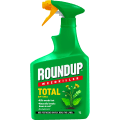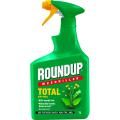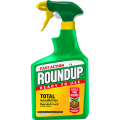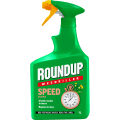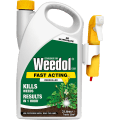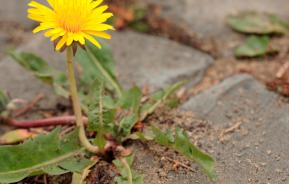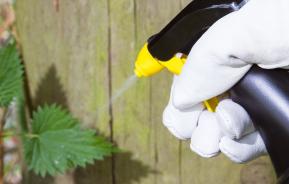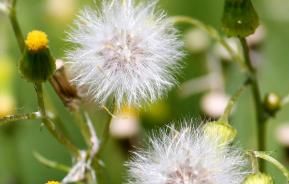
How to control weeds in flower beds and borders
How to control weeds in beds and borders
We all love the sight of a beautiful flower bed in summer, filling the garden with colour and scent. But no one loves all those annoying weeds that spoil the look of your garden! The good news is that there are plenty of ways to stop weeds growing in your flower beds.
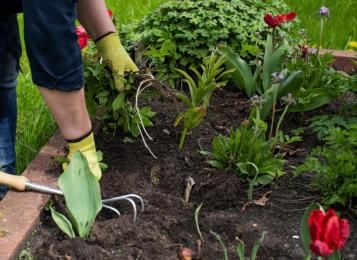
How to get rid of weeds in flower beds
As well as making flower beds look untidy, weeds compete with plants for water and nutrients, and in some cases can even smother plants, blocking out sunlight. They also tend to spread quickly and can completely take over a flower bed if not prevented, so it’s important to control weeds in flower beds as much as possible. There are several different ways to weed a flower bed, including mulching. For the best results, you might want to try a combination of different methods.
How to weed flower beds by hand
Hand weeding is the most traditional method of removing weeds from flower beds. Hand weeding works well for annual weeds like chickweed, groundsel and hairy bittercress. These have shallow roots which are easy to dig up, and they don’t grow back from portions of root.
You can also tackle annual weeds by hoeing regularly, especially when the weed seedlings are still small. Hoe around the plants in your flower beds on dry days, cutting all the weeds off from their roots at ground level. They can be collected and put on a compost heap. Annual weeds won’t regrow from portions of root left in the ground, but they do self-seed liberally, so it’s important to remove them before they have a chance to set seed. The old gardener’s saying “One year’s seeding means seven years’ weeding” is very true where annual weeds are concerned!
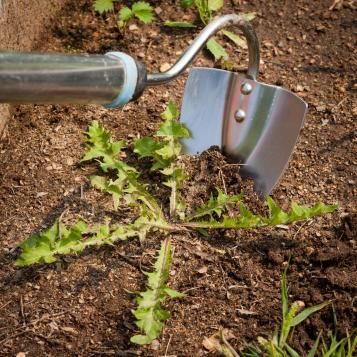
Disadvantages of hand weeding
Hand weeding is often very labour-intensive, and weeds like docks, brambles and dandelions can be difficult to tackle by hand as they have deep roots which need to be completely dug out to stop the weeds growing back. Bindweed and ground elder are some of the most difficult weeds to dig out by hand, as they develop extensive underground root systems and will grow back if any portion of root is left in the soil.
One of the downsides of manual weeding is that it disturbs the soil, bringing buried weed seeds to the surface where they can germinate, so it can sometimes seem as though weeding just results in more weeds!
Therefore, we recommend using alternative methods, such as mulching.
How to stop weeds by mulching
Mulching is a very effective way to stop weeds from growing. A mulch is a physical barrier which is laid on the surface of the soil and suppresses weeds by blocking out sunlight.
Depending on what type of mulch you use, it can also have other benefits. Organic mulches help retain moisture in the soil and improve soil structure, enabling plants to cope better in droughts. A thick layer of mulch can also help protect the roots of half-hardy plants against frosts.
Inorganic mulches include gravel, pebbles and decorative glass, which is often used as a top-dressing for pots. Gravel is a popular inorganic mulch for gardens, and it’s easy to use – you simply spread a thick layer over the areas you want to cover and rake it level.
_0.jpg)
Weed membrane is a woven material made of polypropylene. It is best used on new flower beds before they have been planted up. The weed membrane is laid on top of bare soil and pegged down. Plants are planted in the soil through slits cut in the membrane, and landscape bark chippings can be spread over the top of the membrane to hide it. The weed membrane acts like a mulch, allowing water through but stopping weed seeds germinating by blocking out sunlight from the soil.
.jpg)
Organic mulches include bark chippings, cocoa shells, garden compost, leaf mould and well-rotted farmyard manure. These are spread in a thick layer at least 5cm deep over flower beds. Organic mulch has several benefits:
- It suppresses weeds by blocking out sunlight
- It reduces water loss through evaporation
- Organic mulch gradually breaks down in the soil and improves soil structure, helping clay soils to drain better and sandy soils to retain moisture. A looser soil structure also makes it easier to remove weeds.
When spreading organic mulch around plants, make sure that the mulch does not touch the stem or trunk of the plant, as this could cause rotting.
Organic mulches need to be replaced regularly. Woody mulches like bark chippings break down slowly in the soil and should be replaced every 2-3 years. Softer mulches like garden compost or farmyard manure break down faster and should be reapplied annually in spring or autumn.
How to get rid of weeds using weedkiller
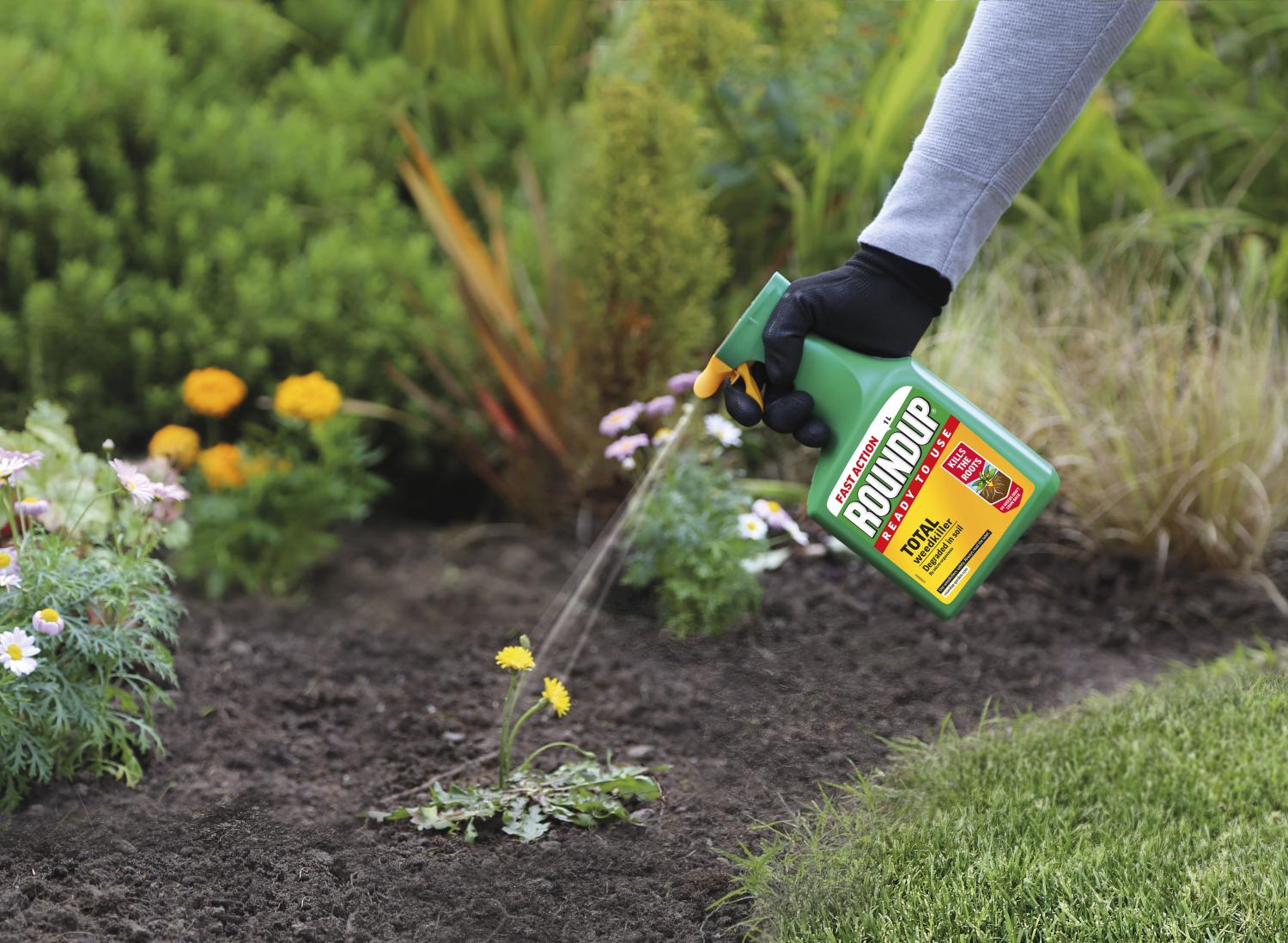
If you have a bed that’s been over-run with weeds, you may need to use a weedkiller to get rid of them.
There are several different kinds of weedkillers, including contact, systemic and selective weedkillers. Selective weedkillers have been developed for use on lawns, where they target weeds without killing the grass. Weedkillers for controlling weeds in flower beds will typically be either contact or systemic weedkillers.
NB: Contact and systemic weedkillers are not selective and will kill plants as well as weeds if they come into contact with them. When using any weedkiller, it’s essential to apply it carefully in accordance with the manufacturer’s instructions, and to protect any surrounding plants.
FAQs
How can you prevent weeds in flower beds?
One of the best ways to stop weeds in flower beds is to apply a thick layer of mulch, such as bark chips or well-rotted garden compost. This blocks out sunlight from the soil, reducing the amount of weed seeds that can germinate. Hoe around plants regularly to cut down any emerging weeds while they are still small and dig up annual weeds before they flower to prevent them self-seeding.
How can you kill weeds without damaging flowers?
Best way to remove weeds from borders is by using a weedkiller. For weeds like bindweed which have large root systems, use a systemic weedkiller that kills the entire plant down to the roots preventing them from coming back. To easily keep flowering plants safe, simply use weedkiller on a calm, dry day and protect your flowering plants with a piece of cardboard whilst spraying.
